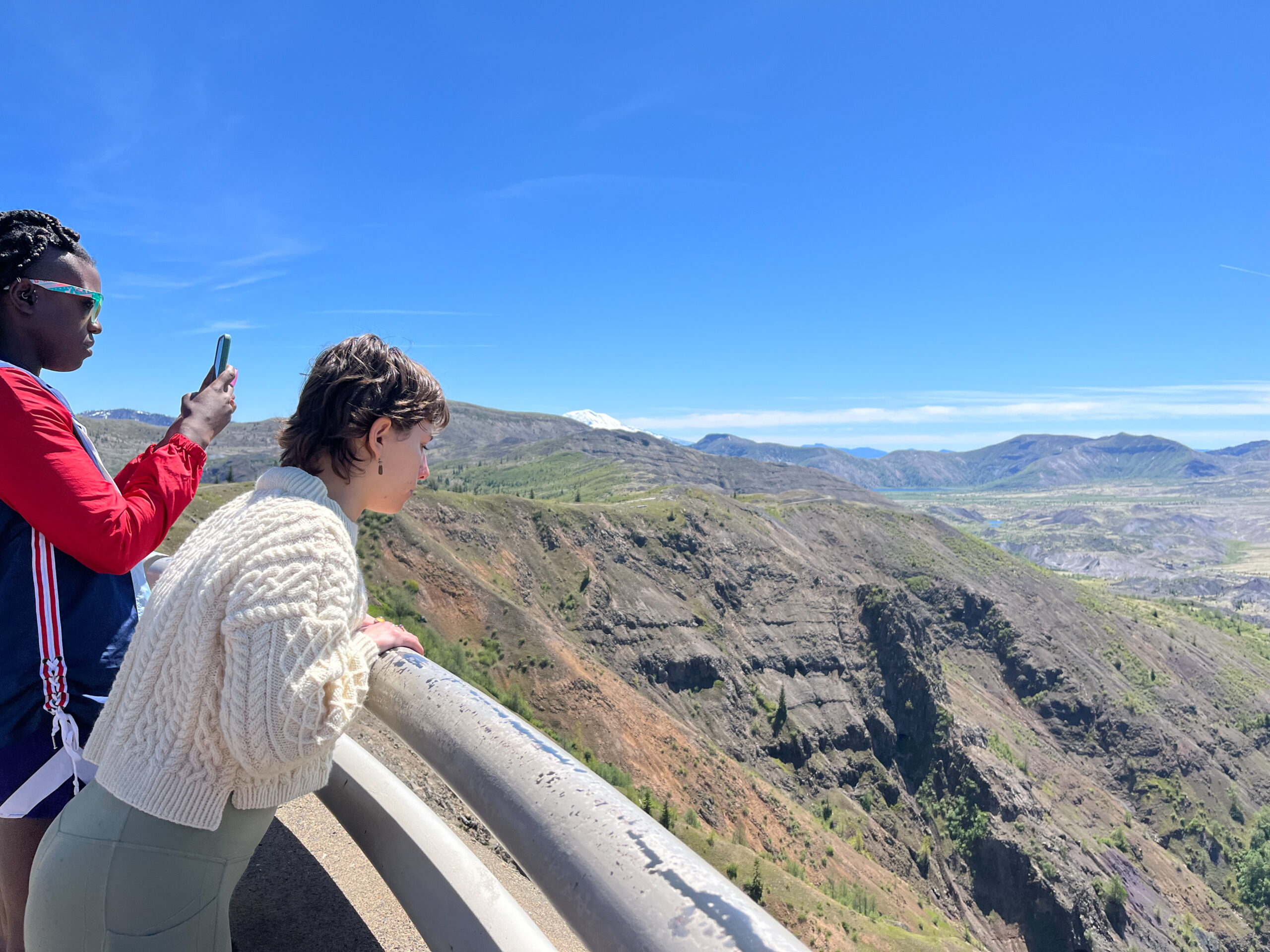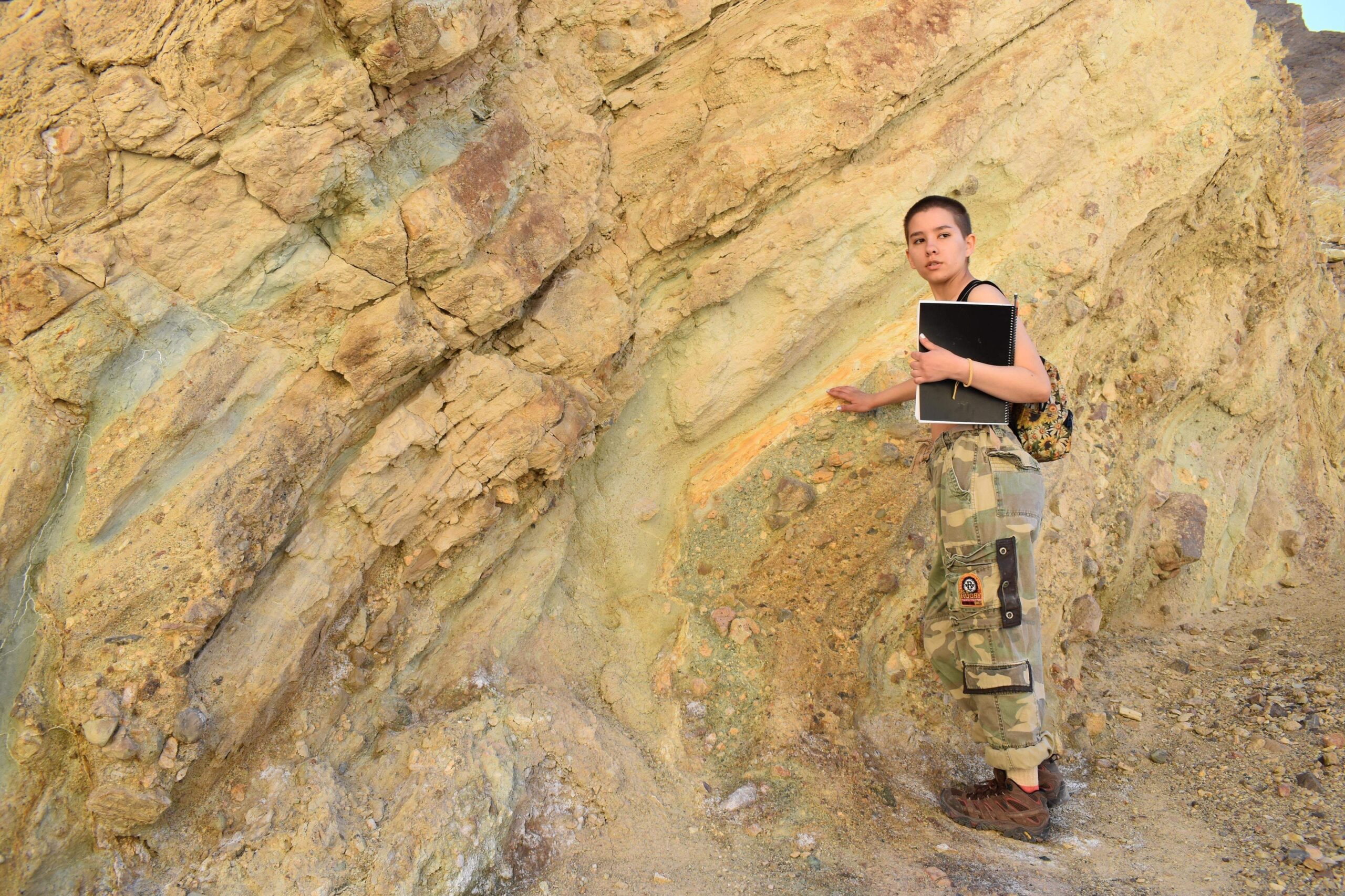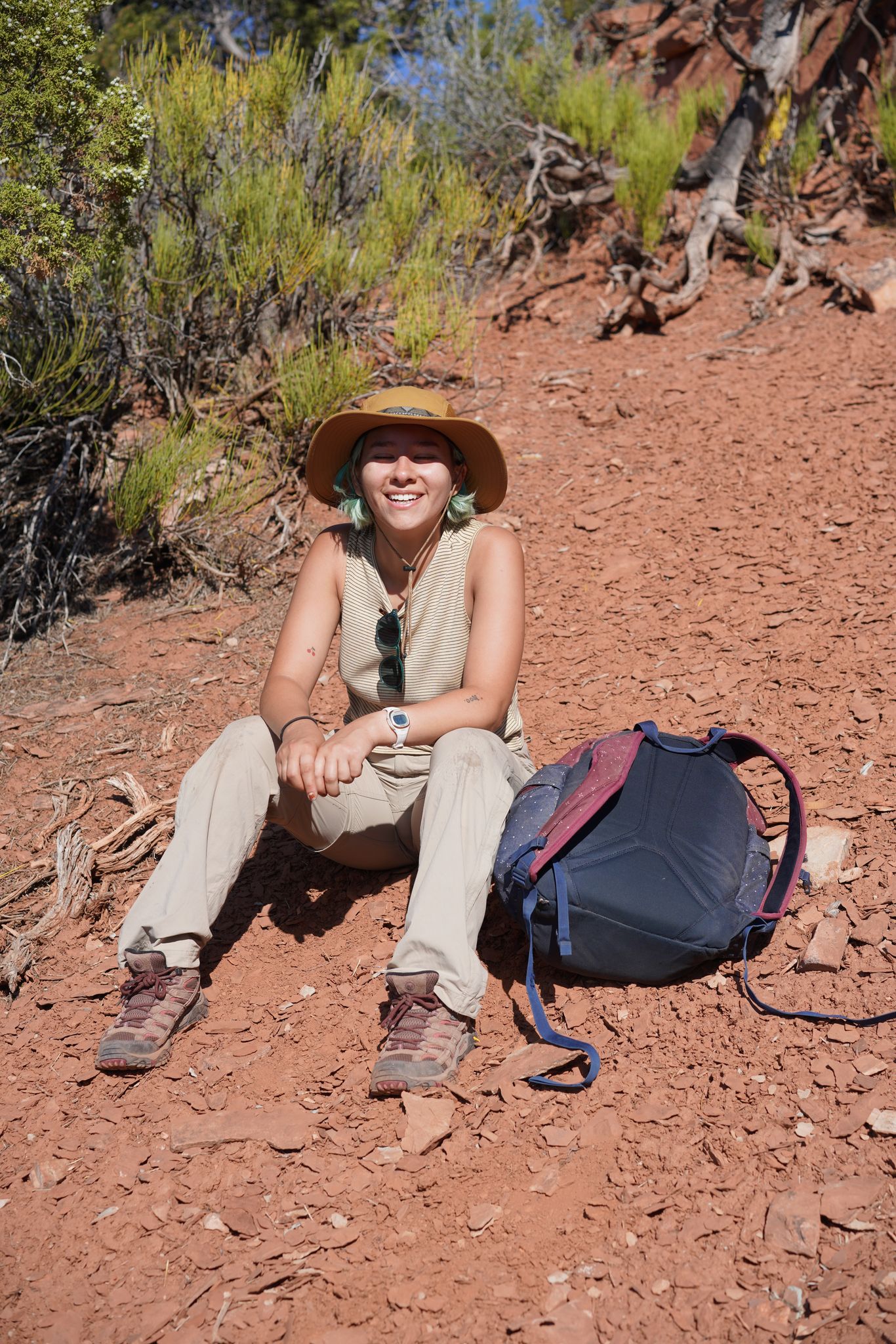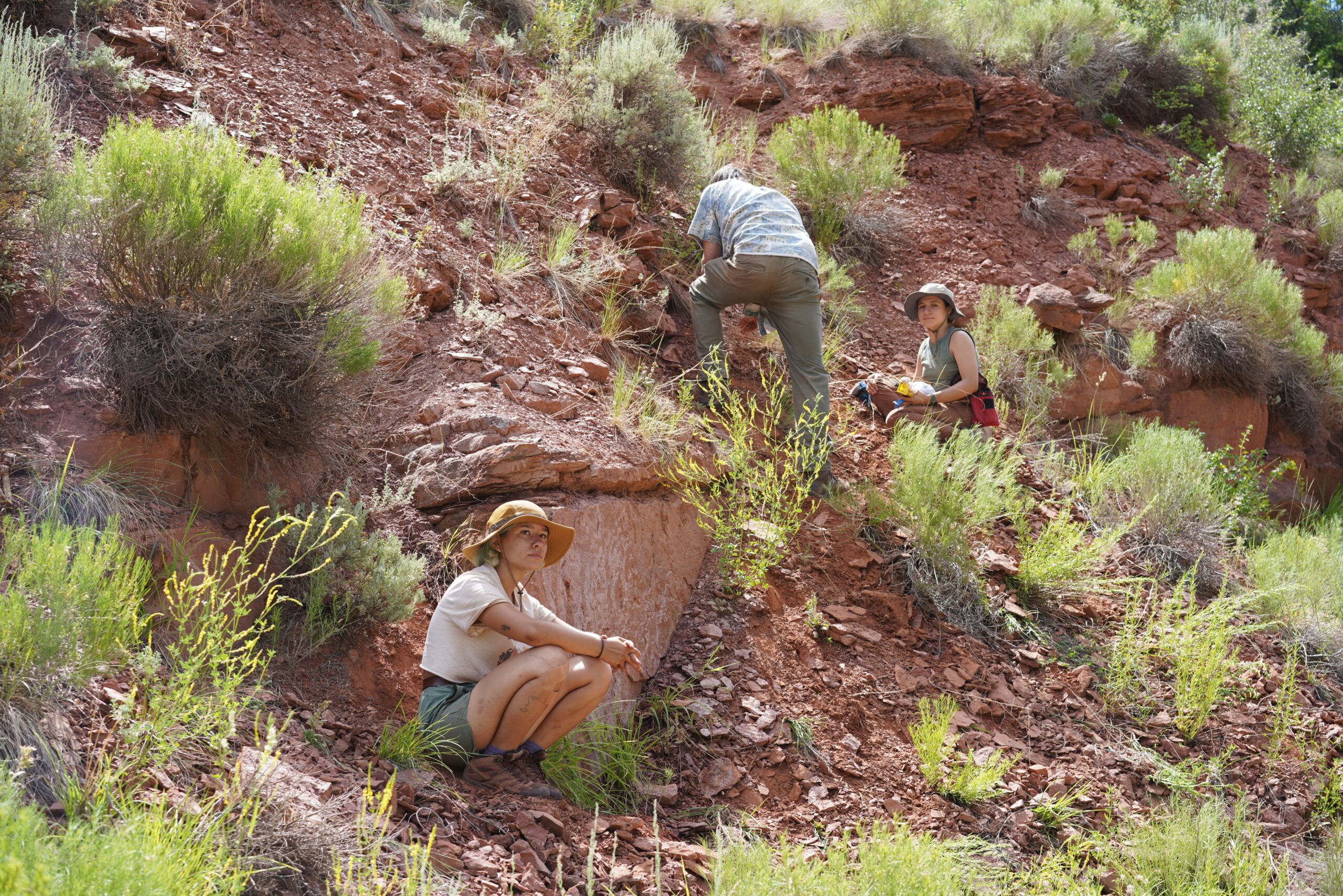



This summer we’re introducing interns in the RESESS, Geo-Launchpad, and USIP programs to shine a spotlight on the research projects they are completing throughout these 11-week internships and on their interests in geoscience.
Angie Bonanno recently graduated from Bryn Mawr College where she received her bachelor’s degree in geology. In their freshman year, Angie wanted to switch out of a class after the add-drop period was over. Their dean offered to switch them into the introductory geology course. Angie intended to have the class fulfill her science requirement and had no intentions to pursue geology, but she was blown away by the discussion on the formation of the universe on her first day of class. When Angie was on a field trip in Death Valley and realized that not only were they exhausted, uncomfortable, tired, and hot, but also the happiest they had ever been, Angie knew that geology was their passion. Last year, Angie researched the validity of the flat slab subduction model with layer-parallel shortening analyses on rock samples from western Colorado and northeastern Utah through her senior thesis. She is excited to try research in a field of geology and to be involved in a larger geology department at the University of Washington this summer through the RESSS program.
This summer, Dr. Cailey Condit and PhD student Jason Ott at the University of Washington are mentoring Angie. Seismic data is often used to research structure and deformation patterns of rocks at depth. Seismic anisotropy refers to the dependence of the direction of seismic wave movement caused by elastic properties of rocks and minerals. Many minerals are anisotropic, which means that they have different properties in different directions—seismic waves will travel at different velocities and in different ways depending upon which direction the wave is traveling through the mineral grain. In the upper portions of the crust, it is thought that mica is a major factor causing seismic anisotropy of the rocks; however, significantly less mica is present in the middle and lower crust. Amphibole may be responsible for the anisotropic measures in the middle and lower crustal areas, but requires further research to describe its size and seismic properties.
Jason Ott isolated amphibole crystals of blueschists from Greece, which he then used for temperature and pressure experiments. Jason ran electron backscatter diffraction experiments on the samples to gather crystallographic preferred orientation data (CPO), which Angie and her mentors used to create a model of the preferred orientation. They used MTEX MATLAB to determine seismic properties and calculate anisotropy of the minerals from CPO data.
The anisotropy data will be useful in describing the movement of the seismic wave so that the behavior of the amphibole minerals and rocks can be explored. Understanding the seismic properties of amphiboles is particularly important in subduction zones because rocks like blueschist, which contains glaucophane (a type of amphibole), are prominent. This anisotropy data will thus allow scientists to better explore deformation in subduction zones. More broadly, an increased understanding of anisotropy will facilitate a better understanding of Earth’s structure and deformation using seismology.
Q&A:
- Why did you decide to apply to the RESESS program?
I was googling geology internships and there were four that actually interested me and that I was qualified for. There’s a very small window of summer internships that you can do having recently graduated without being currently enrolled in something in the fall, so my pool was a lot smaller, and the RESESS program really stuck out to me. I thought [RESESS] was a really cool opportunity… I was really interested in the fact that I could work with a completely new research team, learn a different style of research because everyone works in a little bit of a different way, and also try something new. I feel like RESESS had a lot of those opportunities and was the one that I was most excited about… When I got my offer letter, I was super excited and also the fact that the satellite program is in Seattle and I’d never been to Seattle or really thought about spending a lot of time in Seattle…I feel like RESESS was a bit of a happy accident…and it turned out to be really incredible.
- What has been your favorite part of the RESESS program so far?
I think all of the newness. It’s incredibly valuable to be able to experience a bunch of different, not only field styles, but also research styles and different teamwork settings before you make a decision about grad school, which is my next step… Being able to experience a whole new side of that coin before I make that decision was really important to me and being able to try all these new things. I’m in a new place, I’m working with new people, I’m studying something new. I’m also working with… a team, which is also an incredibly important skill to learn and to practice. At [Bryn Mawr College], it was just me and my advisor. I got to work really one-on-one with someone who… really knows the field that we’re working on very well… I feel like that’s great, but it leaves this teamwork side, where you have to learn how to not only lead people but also how to be an effective team member. Practicing those skills is really great. I feel like I’m just tackling a bunch of new things, but it’s really not intimidating at all. I feel like it’s a very accessible way to learn new stuff. I know that’s a broad umbrella category, but honestly most of the individual components of this program are new to me. I think that it’s incredible to be able to experience that all at once.
- What have you gained from your mentorship with Dr. Condit and Jason Ott?
I really like the collaboration. I really feel like I’m working with them instead of them telling [me] what to do. I definitely feel like we’re on this journey together, like looking at this data and figuring out…what it means and what its implications are. It’s very hands-on and I really appreciate all the time and energy that they’re spending, helping me understand this stuff and showing me the ropes. They’re very welcoming, kind, understanding, and generous not only with their time but also with their resources.
Angie is planning to take a gap year before applying to graduate programs in geology. She hopes to someday teach undergraduate courses that are as impactful as the introductory geology course was to her. This summer, Angie is looking forward to going home to New York City to spend time with their family.
Written by:
- Lucia Bellino, USIP Intern
- Posted: 27 July 2022
- Last updated: 22 July 2022
- Tags: internships, mineralogy, RESESS, seismic


